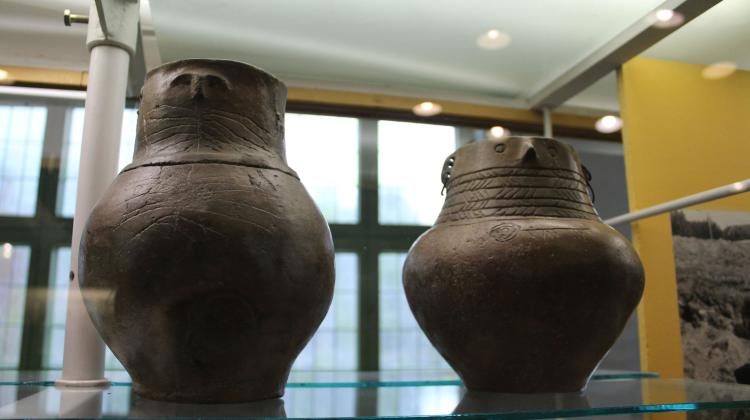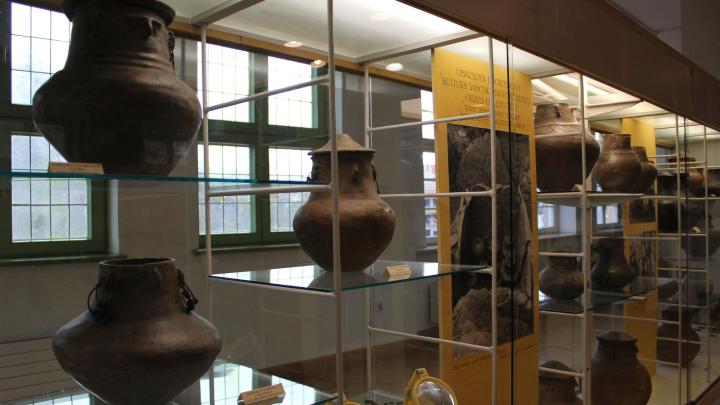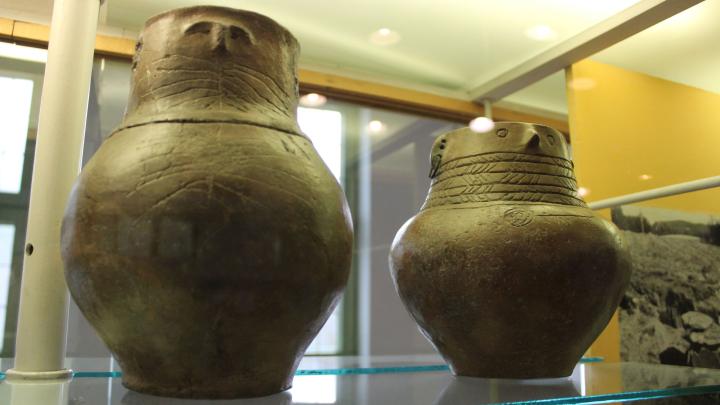Face urns help reconstruct the appearance of prehistoric people
 Photo: Kinga Alina Langowska
Photo: Kinga Alina Langowska
2,5 thousand years old face urns from not only allow archaeologists to look in the "eyes" of prehistoric people, but also help reconstruct their clothing or the way jewellery was worn, said Kinga Alina Langowska of the University of Gdansk, who analyses these unusual artefacts.
Face urns are one of the most unusual categories of artefacts found in Poland. These vessels were shaped like a vase with brassy belly and slender neck. In the upper part of the urn, an image was recreated - probably of the deceased (eyes, ears or mouth are visible) whose ashes were inside the vessel. The dead were buried in this way in the northern part of the present Polish territory in the 6th - 4th century BC.
Decorations in the form of ornaments and pieces of clothing visible on 2,5 thousand years old face urns were faithful reproductions of the actual prehistoric garments.
"If we find the same artefacts during excavations as the ones depicted on urns, there is no doubt that the ancients wanted to present their dead as faithfully as possible" - believes Kinga Alina Langowska, a researcher at the Institute of History of the University of Gdansk, who analyses urns for reconstruction of clothing and used ornaments.
Reconstruction of clothing from millennia ago is very difficult, because almost no fabric has survived to our times in the present-day Poland territory. That\'s why it is very helpful to analyse face urns - in addition to the facial image, there are visible patterns of ornaments - necklaces, earrings, various pins. The same ornaments are found by archaeologists during excavations.
"But urns tell us how they were used, we do not have to guess" - added Langowska.
According to the researcher, fabrics and tattoos can also be visible on the urns. The former - according to Langowska - are represented in the form of ornaments in the shape of herringbone or oblong punctures. "This could represent way perhaps the hem" - said the archaeologist.
As an example she mentioned hat covers. These are urn covers, the shape of which resembles headwear. Langowska believes that these were hats made of fabric, which could cover the ears. Their distinctive feature is the division (in the form of grooves) into 4 parts. The researcher believes that the grooves depict seams connecting several pieces of fabric.
However, not all images on the urns could represent fabrics. According to Langowska, some of them - especially the ones that cover the face - are tattoos. "We know of similar body decorations from this period in other parts of the world - for example Siberia" - she added.
Face urns also help to answer the question of how people dressed 2,500 years ago. Langowska gave the example of the location of pins and clasps on the urns. These are located under the chin in the central part of the urn, which suggests that these items probably fastened linen garments in this place. Buttons were not yet known.
Interestingly, on some urns, for example in the case of ears, real metal jewellery was used. "We are dealing with complex compositions in the ears. Archaeologists who discover individual items often interpret these ornaments as beads or rings, but the urns show us another possibility - these are earrings, or rather their parts" - the researcher noted.
According to Langowska calculations, almost 2200 facial urns have been found in Pomerania. They were discovered in about 500 archaeological sites. For the purpose of her research, Langowska selected almost 400 face urns with depictions of costume elements - breastplates, necklaces, pins or clasps. In turn, on about 800 urns actual artefacts were placed, such as metal earrings in the ears made of ceramics.
Unfortunately, most of the urns were found decades ago, so it is not possible, for example, to perform genetic analysis of their contents (because some of the material has been lost). "It would make it possible to determine, among other things, to whom the urn belonged - a man or a woman, and compare the result with the image on the urn" - added the researcher.
PAP - Science and Scholarship in Poland, Szymon Zdziebłowski
szz/ agt/ zan/ kap/
tr. RL
Przed dodaniem komentarza prosimy o zapoznanie z Regulaminem forum serwisu Nauka w Polsce.

















